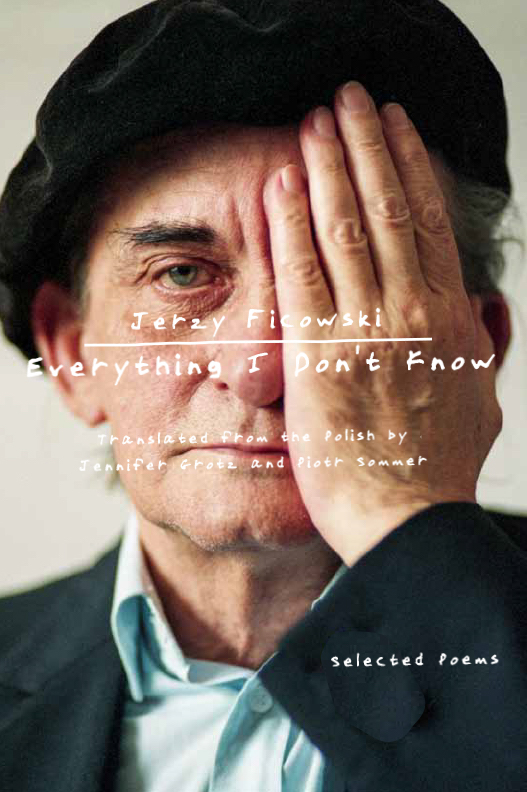“Pantarheia” is the title poem of Jerzy Ficowski’s last collection, published the year before his death, and it is one of the poems included in Everything I Don’t Know, the volume of his selected poetry co-translated by Piotr Sommer and myself. The title (“Pantareja” in Polish) is a neologism of Heraclitus’s assertion “Panta rhei,” which is usually translated in English as “Everything flows” or “Everything changes.” Here, Ficowski has turned the phrase into a noun, or more specifically, a proper name, which he has assigned to a butterfly or moth.
Such neologisms, coaxing words to serve as uncustomary parts of speech, are a signature in Ficowski’s poetry and enact some of the singularity of his imagination. Another is an evocative use of imagery that operates according to its own visual logic. An apt figure for the butterfly’s spotted markings, “the large slanted eyes / on each wing / not noted in Linnaeus,” once evoked, become literal. “Don’t touch” the “left hazel one now asleep,” the speaker warns, “because / it’s losing sight.” Here there’s a delightful melding of literal and figurative, where a spot becomes an eye and can then do what eyes do, such as sleep or go blind, all while evoking the torn wing’s status of starting to lose its pigmented scales. Also inherent in the poem’s visual logic is a rhyme of sight with flight. The torn off eye/wing, affectionately nicknamed “Youppi junior” after the typhoon that injured Pantarheia, rests in a drawer hoping for one more flight, that is one more “sidelong glance.”
There’s another conceptual rhyme in the poem between flight and time, very close to the actual rhyme in the Polish (“lat” is the word for “year”; “lot” is the word for “flight”). “So many years and years / and years / only in flight and flight / and flight,” the narrator observes of the butterfly’s long migration. Piotr and I couldn’t preserve the slant rhyme in English, but fortuitously, the parallel syntax and the matching monosyllabic “years” and “flight” clearly create their own sort of chime that sounds out the wistfulness or weariness of “how long it is / this halfway.” In the afterword of our collection, Piotr observes that in Polish there is also a mental rhyme that occurs between “Pantareja” and “Odyseja”—Panta rhei with Odyssey, whereby this subtle lyric poem connects to the ancient epic.
What is it we’re actually influenced by when we read or translate from other languages? What is it that draws us to look for inspiration there or in other media, like visual arts or music? One answer lies in what the late critic Daniel Albright called panaesthetics, a sort of belief that certain universal principles might unite artists or the process of making, regardless of medium or language. But another answer might be that we go to the work of other languages or other art forms in order to escape an influence or given tendency that our own language and tradition may exert on our making. Both impulses feel true to my experience with Ficowski, and both felt heightened in my case from the act of co-translating, which required discussion and consensus with an interlocutor. Before encountering Ficowski’s work, I think I had a more painterly notion of how concrete description and metaphor worked in my poems. My fascination had been primarily with the relation of the literal and the figurative, how “I see,” for example, could be literal (eyesight) and/or figurative (I realize, I understand). Or, to speak with our usual vocabulary about metaphor, the vehicle (the “the large slanted eyes”) is conventionally understood to be in service of revealing the tenor (the spots or markings on Pantarheia’s wing), but here, they seem to have equal footing, mutually informing each other like rhyme. Additionally, Ficowski’s imagery often expands into a third dimension that incorporates time or duration. The seeing that happens in “Pantarheia” includes eyesight and understanding, but it nuances understanding to remind us it is also a process, a journey in which we are still seemingly “halfway” there.




